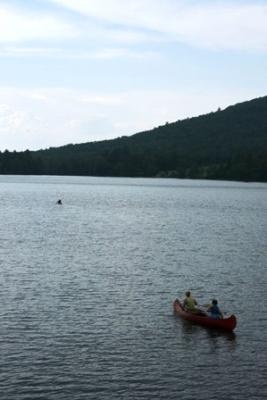Martin Meadow Pond Fishing Spot
- Acreage: 128
- Public Fishing: Yes
- Mean Depth: 13'
- Max Depth: 30'
- Website: http://www.wildlife.state.nh.us/Fishing/Fishing_Reports/Fishing_Reports_2008/fishing_report_090408.html
- Last Modified By: kash87 on 04/20/21 11:58 AM
- Ask about Martin Meadow Pond in our Fishing Forums
Photos
Fish Species
Comments
-
Have you fished at Martin Meadow Pond? Be the first to comment on this fishing spot.
Martin Meadow Pond Description
What's considered an acceptable margin of error for us fisheries folks may turn out to be an advantage to anglers. As regularly scheduled stocking concludes in summer, fish culturists, biologists, and Conservation Officers plan for the best use of extra fish. Because it's fall, ice-fishing destinations become great candidates for surplus hatchery-raised fish. Often older, larger, or broodstock fish, these trout can create some exciting opportunities for those anglers looking for late-season trout. This type of supplemental stocking has taken place with some regularity at Martin Meadow Pond in Lancaster. Rainbow trout as big as 20 inches have been stocked as late as November, giving the fish plenty of time to acclimate to localized conditions and become a greater challenge. Located easily on Martin Meadow Pond road off of US Rte. 3, the pond offers plenty of parking and access for foot travel. Anglers should remember that catch-and-release-only season for bass (smallmouth and largemouth) in NH (May 15 - June 15). Only artificial flies and lures may be used, and bass must be immediately released unharmed at the site of the catch. It's for a good cause: The male smallies are defending their nests from predators, protecting their young and ensuring the next generation's safety.
Regardless of location, rainbows can be angled for in similar ways. I've found that placing a salmon egg or artificial Power Nugget(R) on a small circle hook with no weight can be effective. I'll look for shallow, sandy water and slowly drop the bait to the bottom. The fish seem to pick up the bait and run short but quick distances. I recently spoke with a serious bass fisherman who has been looking to catch some pre-spawn large and smallmouth. He found Martin Meadow Pond in Lancaster to be just what he was looking for. Fish over-wintered well and look healthy and robust. They seemed to be keyed in on light-colored plastic baits like Senkos and lizards. I've always liked white in spring, as many forage species such as aquatic insects are in a larval stage that big fish recognize.
